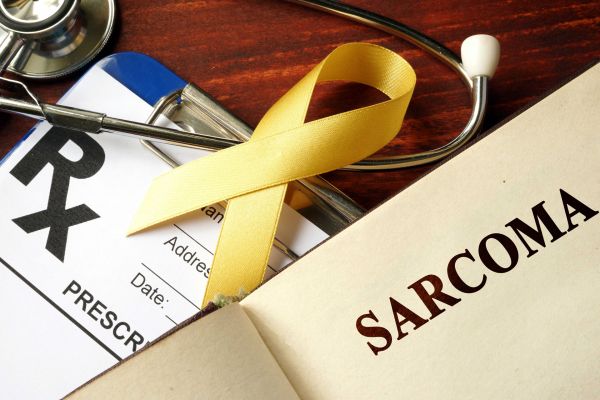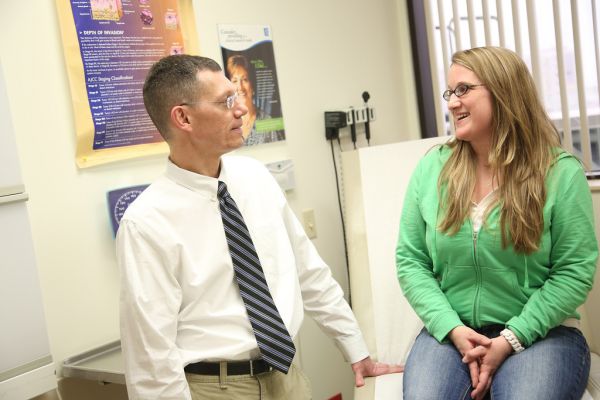The hours, days and weeks following a cancer diagnosis can be a whirlwind.
Life-changing decisions will come at you fast, and it may be challenging to understand your diagnosis and what you should expect moving forward. Things can be even more complicated if you have a rare cancer, such as a soft-tissue sarcoma.
Survival rates vary
It’s estimated that sarcomas make up only 1% of all adult cancers, according to the National Cancer Institute. “There are many different types of soft-tissue sarcomas,” says John Kane III, MD, FACS, formerly of Roswell Park Comprehensive Cancer Center, “and there are a lot of factors at play, such as the size, location or even the type. Location makes a difference. The same type of sarcoma arising in the arms or legs tends to be less aggressive than one on the trunk or inside the abdomen.”
Most sarcomas are not painful. However, depending on the location, there is a chance that the tumor could push on a nerve, resulting in some discomfort.
Your age and the size of the tumor can increase the risk that your sarcoma will spread, or metastasize. Smaller sarcomas are less likely to spread, and younger patients tend to have better chances for survival.
“There is a staging system for sarcoma, but it isn’t as helpful as with other cancers,” Kane said. “When patients are diagnosed, they ask, ‘What’s my stage?’. It’s the first thing they want to know. In some cancers, staging determines a lot. For sarcomas, it’s very individualized.”
The most common treatment
As with any cancer, it is essential to detect and treat sarcoma early, hopefully before the tumor has spread to other parts of the body.
Sarcoma Treatment
Get even more information about the different treatment types for sarcomas.
If your sarcoma has not spread, you’ll usually head into surgery as a potentially curative treatment. But as Dr. Kane pointed out, surgery is not the only way to treat sarcoma. “Radiation is also used sometimes to kill microscopic cells that surgery could not remove without significant injury to the adjacent normal tissues. If your sarcoma is near major nerves, blood vessels or organs in your abdomen, you may receive radiation before your surgery. This shrinks the tumor and makes it easier to remove, reducing the risk that the surgery will harm any healthy tissues nearby. If you have a high-grade sarcoma, radiation may also be given before surgery to reduce the chance that the tumor will metastasize, or spread."
Some patients who are not candidates for surgery may receive radiation only. “While radiation by itself may work in only a small percentage of people, it can be helpful if surgery is not possible.”
Although many patients with sarcoma do not need chemotherapy, aggressive sarcomas that have already spread to nearby organs, or patients at high risk for the disease spreading microscopically, could end up needing chemotherapy alongside other treatments.
Choosing the right place can make all the difference
“Since sarcomas are relatively uncommon, it’s better to come to a place that focuses on this rare cancer,” Dr. Kane said. “We see these cases more often than most other hospitals.
“We have a true multidisciplinary team that specializes in soft-tissue sarcomas. We meet weekly as a group to discuss and develop a treatment plan for each patient. A physician presents the case, the radiologist displays the imaging, the pathologist discusses their findings, and then we all talk about the correct sequencing — the order in which the treatments should be given. If you need radiation or chemotherapy before surgery, we decide that before any treatment begins.”
Never miss another Cancer Talk blog!
Sign up to receive our monthly Cancer Talk e-newsletter.
Eligible patients also have access to the latest clinical trials — and that can make a big difference with this type of cancer. Clinical trials offer cutting-edge treatments that are usually not widely available.
Don’t expect a lengthy hospital stay
Your time away from home may depend on the type of treatment you receive, but most people will be in the hospital for only a few days. The length of your stay for surgery depends mostly on where your tumor is located. Sarcomas of the arms and legs are the most common, and removal is often well tolerated overall. Things can get trickier if the sarcoma is located in your abdomen or near major organs. Radiation is almost always given as an outpatient procedure. And while the most common chemotherapy regimen for soft-tissue sarcomas typically requires a four- or five-day hospital stay, there are also some regimens that can be given on an outpatient basis.


